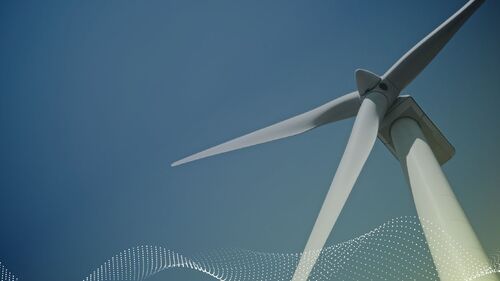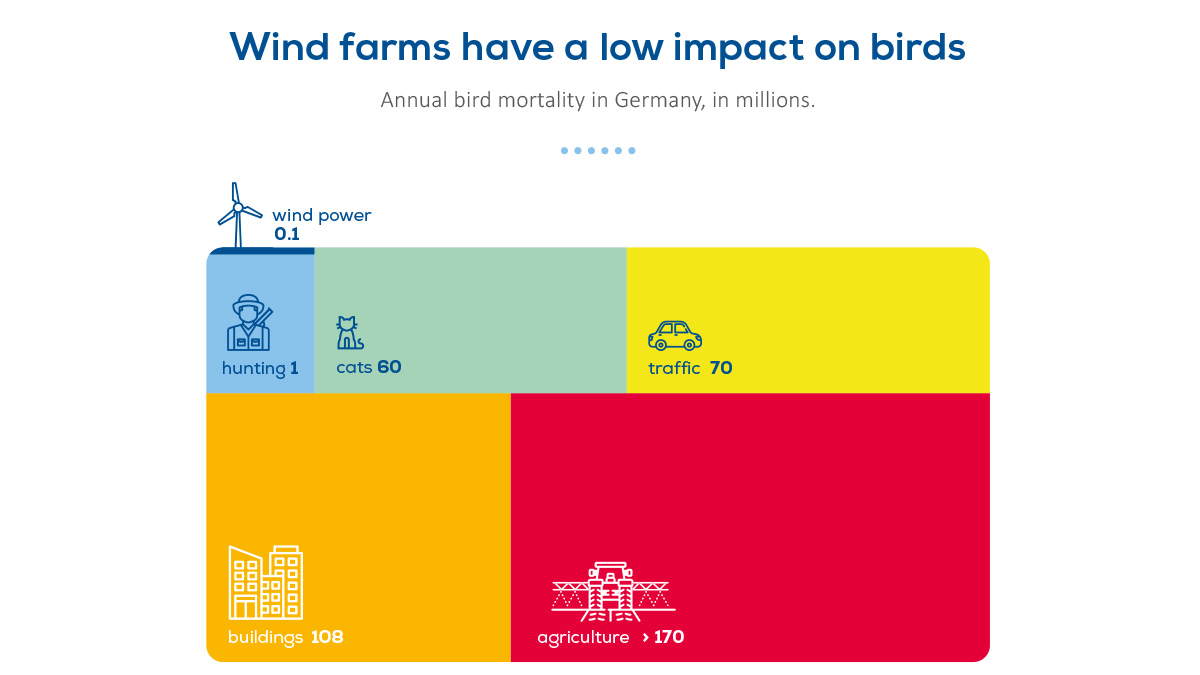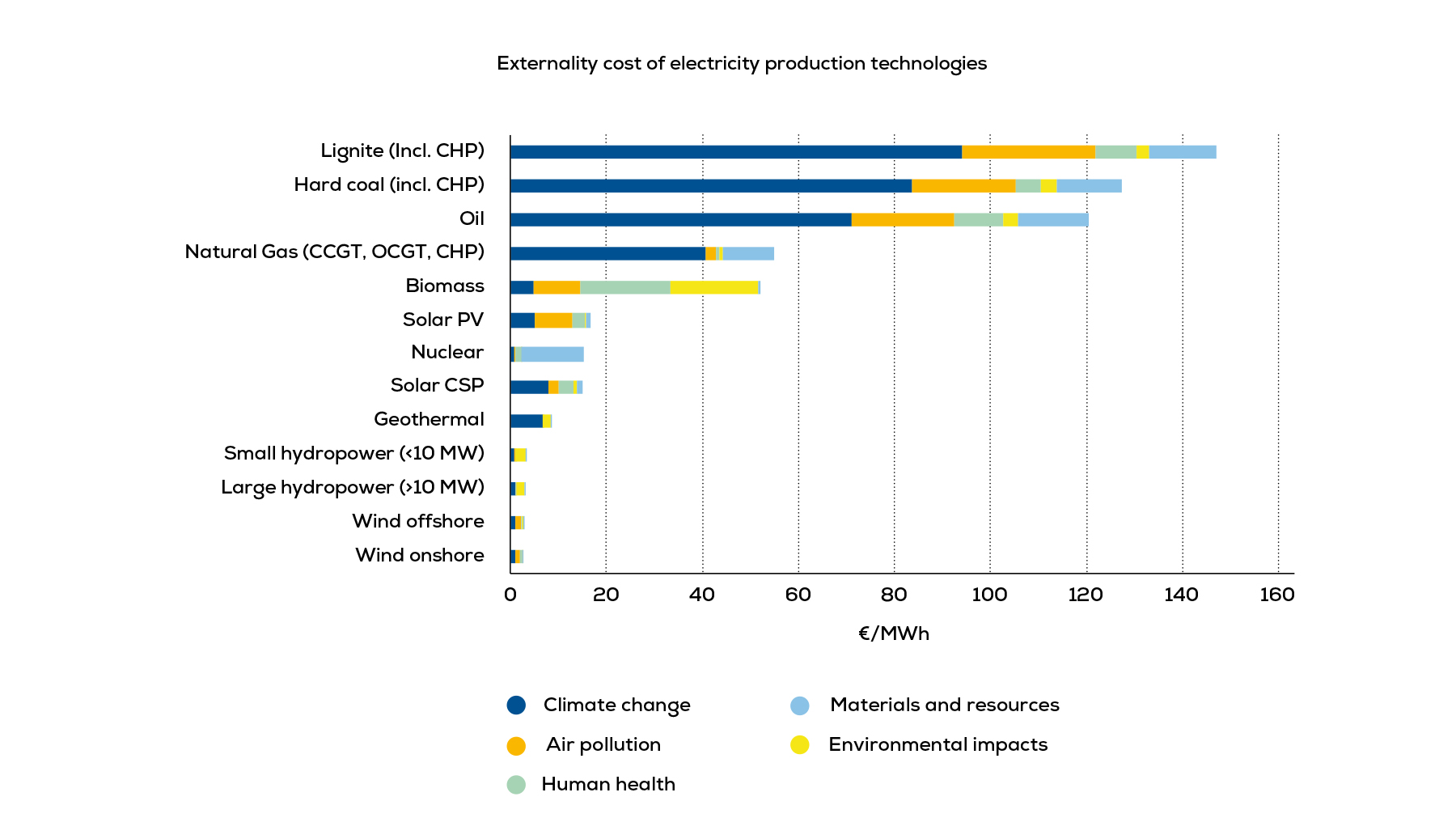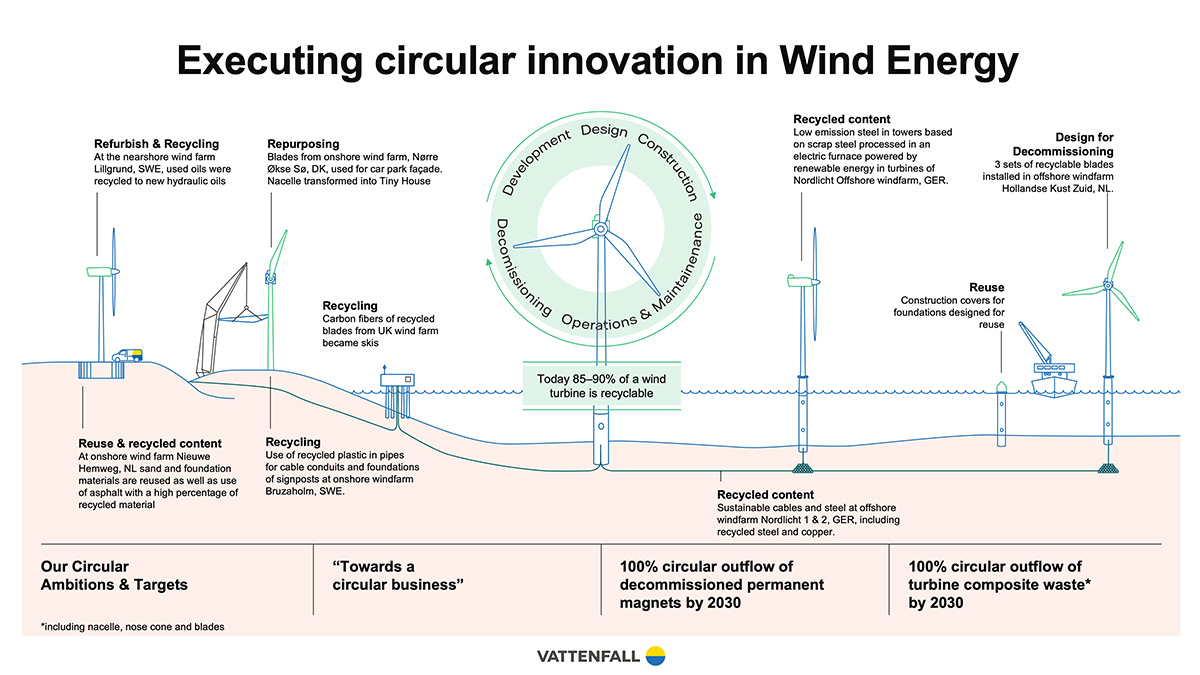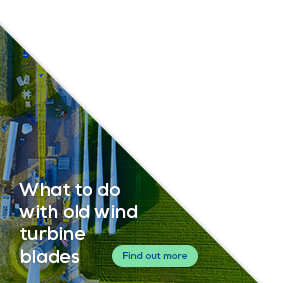Flash news
Special title treatment
With supporting text below as a natural lead-in to additional content.
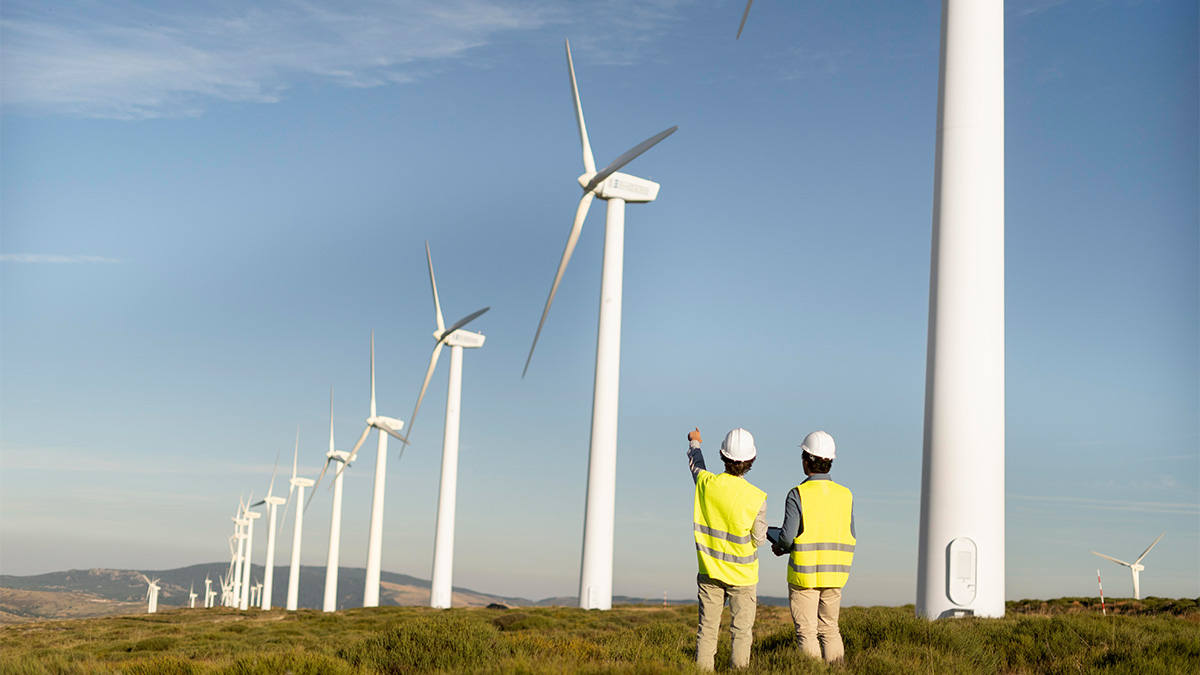
Electricity prices
Wind and solar energy are the cheapest sources of electricity in Europe.
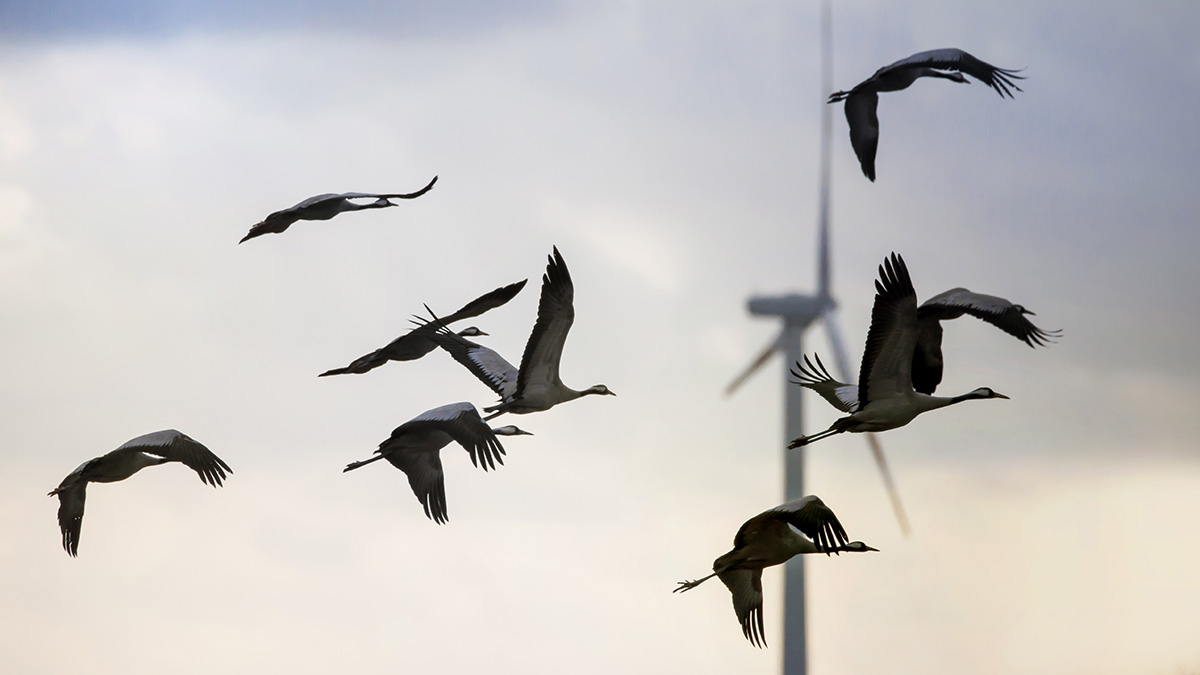
Birds
Wind farms have a much smaller impact on birds and bats than climate change or other human activities.
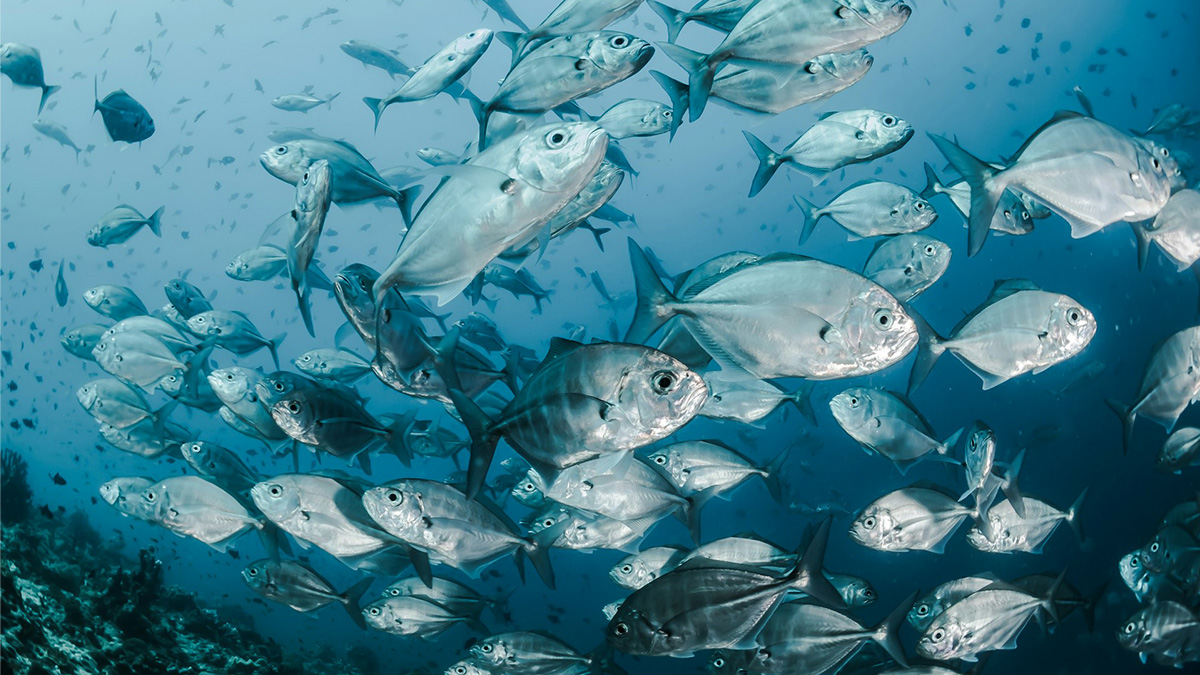
Marine biodiversity
Claims that offshore wind farms cause more whale deaths are unfounded.
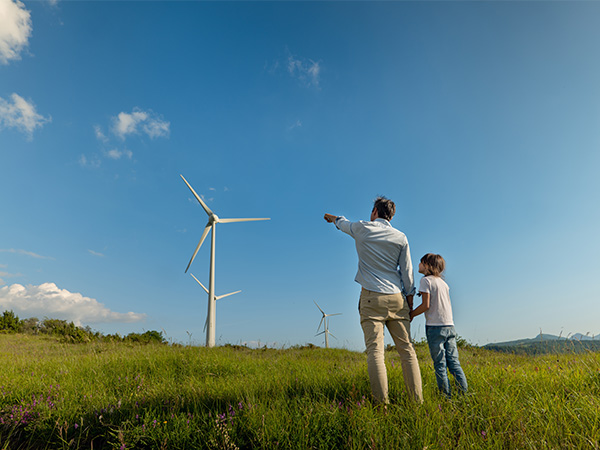
Wind energy and health
With more than 100,000 wind turbines installed across the continent, millions of Europeans have been living and working next to wind turbines for several decades without any issues.
Countless studies have found that wind farms have no negative effect on human health, including from electromagnetic fields (EMF), shadow flicker, audible noise, low-frequency noise and infrasound1.
Especially infrasound caused by wind turbines is a frequent subject of allegations around wind-related health effects. The largest and most rigorous studies, including Health Canada’s survey of over 1,200 households, consistently show that infrasound from modern wind turbines is far below the threshold of human perception and poses no demonstrated health risk2. The infrasound caused by nature in the form of wind is significantly stronger than that generated by the wind turbine itself.3. For comparison, many everyday sources - traffic, waves, industrial machinery, generate higher or comparable infrasound levels 4.
While infrasound is below human threshold, some people can be annoyed by the audible noise of wind turbines. A long-term study by the Bavarian Environment Agency showed that at a distance of 250 metres, the sound emissions of wind turbines are well below the threshold of human perception 5. Wind turbines in Europe are generally built at least 500m away from households.
It’s also important to emphasise that noise compliance is tightly regulated. Every EU wind farm project must undergo a detailed acoustic assessment before permitting. Developers are required to demonstrate compliance with national and local noise limits, and where necessary, individual turbines can be operated in noise-reduced modes or even curtailed to protect nearby receptors, especially humans. This system ensures that exposure levels remain well within safe and acceptable limits.
On top of that, technology and design improvements continue to reduce sound emissions further. Blade serrations, refined blade geometry, and advanced control strategies are all now standard tools for reducing aerodynamic noise - both audible and low-frequency components.
Despite a large body of scientific evidence, there are individuals claiming they are experiencing stress, fatigue, headaches and other health issues due to wind turbines. Many of them claimed to suffer from a so-called ’wind turbine syndrome’, an alleged condition arising from living in the proximity of wind turbines. Scientists explain this with the ‘nocebo response’. This is a psychological effect where negative expectations - often fuelled by misinformation - lead people to experience real medical symptoms despite the absence of a physiological cause 6. An Australian study found that most reported wind turbine syndrome cases emerged after anti-wind groups began linking turbines to health concerns 7.
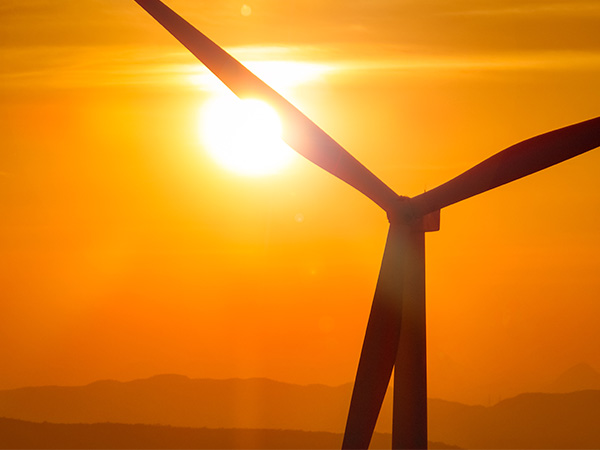
Shadow flicker or flicker effect
Scientific studies show that the flicker effect does not harm human health, even for people with photosensitive epilepsy.
The flicker effect, also known as shadow flicker, happens when the sun shines through the rotating blades of a wind turbine, creating a flickering shadow. This can occur for a short time when the sun is low in the sky.
The flicker is predictable and only happens under specific conditions, such as clear skies and certain times of day and year. According to research, the levels of flicker experienced by people living near wind turbines are far below the thresholds that could cause health problems like seizures, even for those with photosensitive epilepsy8.
The wind industry takes this issue very seriously and follows good practices to reduce potential annoyance. Developers use computer models to predict where and when shadow flicker might happen before building a wind farm. These models consider the position of the sun, the layout of the turbines in a wind farm and nearby buildings. If the models show that flicker surpasses a certain threshold, developers are legally required to make changes to the turbine layout or use other solutions to reduce the effect. For example, they might move a turbine farther away from a home or adjust its operation during certain times of the day.
Another solution is to install sensors that monitor sunlight and turbine rotation. If the conditions for shadow flicker are met, the turbine can be temporarily shut down to avoid causing flicker. This is called curtailment, and it’s a practical way to keep the impact low without affecting the overall energy production too much. Some wind farms also use automated systems that track shadow flicker and respond in real time 9. These systems help ensure that the flicker stays within acceptable limits and that nearby residents are not disturbed.
Wind developers work closely with residents to explain what shadow flicker is, how it’s managed, and what to expect. This helps build trust and ensures that people feel heard and respected. In many cases, once people understand the issue and see that it’s being handled responsibly, their concerns are eased. The U.S. Department of Energy also provides resources and guidance to help communities and developers work together on this topic.10
Overall, while shadow flicker can be a noticeable effect of wind turbines, it is not harmful to health and is well managed by the wind industry. Through careful planning, smart technology, and open communication, developers can minimise the impact and ensure that wind energy remains a community-friendly source of power.
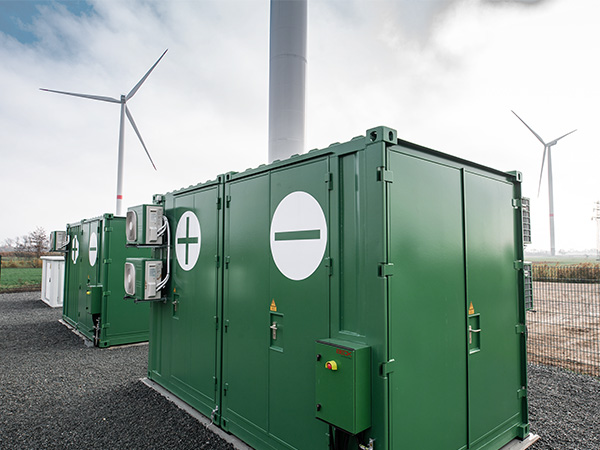
Battery storage systems
Battery safety risks are well understood and addressed through regulatory safeguards.
Battery energy storage systems (BESS) are crucial infrastructure to keep Europe’s renewables-based electricity grids stable. They store excess electricity generated during periods of high renewable output. And release it when generation drops or demand peaks.
Some politicians who oppose wind energy described BESS as unsafe. This is misleading. Safety incidents involving battery storage are rare. Lithium-ion batteries can pose fire risks, but these are well understood. Safety hazards can be effectively addressed through various safeguards.
Most battery sites are equipped with fire detection and suppression systems. BESS are also designed with flame-resistant walls and adequate spacing between units to help prevent fire spread. These protective measures are detailed in battery safety management plans which are typically submitted during the permitting process 11.
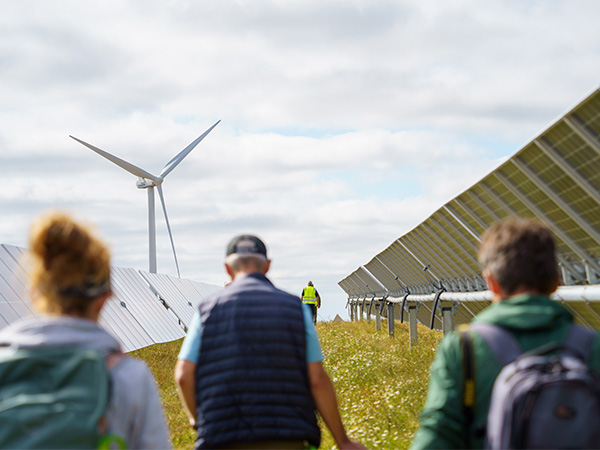
Wind and local communities
Many local communities embrace their wind farms for delivering economic activity, energy security and other benefits.
While 85% of Europeans agree12 that the EU should invest massively in renewable energies such as wind, it’s important to ask how popular wind energy is in those countries where citizens are regularly exposed to it. Germany is a great case study, highlighting the high acceptance of wind energy by local communities.
Germany is home to Europe’s biggest onshore wind fleet. Around 30,000 wind turbines have been installed, supplying 25% of the country’s electricity. 80% of Germans think expanding wind is ‘’important’’ or even ‘’very important’’. And 80% of Germans living next to wind turbines are in favour of their installation. Around 70% of Germans say they have little or no worries about wind farms built in their neighbourhood. 13
How are local communities benefitting economically?
People support the expansion of wind because they believe it is needed for European energy security. But also because wind farms bring benefits to communities. On average each new wind turbine generates €16m of economic activity. Much of this money stays where the wind farm is built. This increases local tax revenues which can be used to fund schools, roads and public services. Wind farms pay €11bn in taxes a year, supporting communities across Europe.
New wind farms also create new local jobs. Most of these jobs are created during the construction phase of the wind farm. But once it is completed there is still a need for operation and maintenance jobs which provide new and future-oriented work for rural areas. Additionally, landowners receive lease payments from having wind farms on their land.
Wind energy also helps put downward pressure on electricity bills since wind is cheaper than gas, coal or nuclear-fired power plants. And in many cases, wind farms are paying money back to Governments because of two-sided contracts for difference. For example, in 2022, wind farms paid €3.7bn to the French State. And wind energy is expected to pay the State €18bn by 2035. 14
Wind turbines bring economic and environmental advantages but can also pose challenges for local communities. Proper planning, community engagement and mitigation strategies can help maximise benefits and reduce negative effects.
What are other impacts?
When building a wind farm, thorough environmental impact assessments need to be conducted that consider many factors. Three important ones are distance, sound levels and shadow flicker. Developers have to ensure the impact on people and nature is minimal following rigid rules.
The latest wind turbine models are much quieter than older ones. We have made major improvements in design and technology and have almost eliminated mechanically generated noise. We have also significantly reduced aerodynamic noise created by the motion of blades through wind and continue to work on this.
Noise levels are strictly regulated and assessed during the planning process and operational life of wind farms. National regulations restrict the sound of wind turbines. The maximum allowable limit varies between 40 to 55 decibels by day and is reduced by 5 to 10 decibels by night, depending on the country. 55 decibels is comparable to the noise level of street traffic. 40 decibels is as quiet as light rain15.
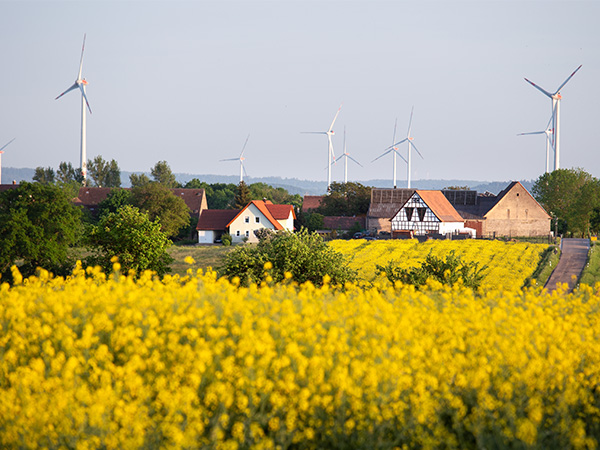
Housing prices and visual impact
Wind turbines have no or a limited impact on housing prices.
Opponents of wind energy often argue that the presence of wind farms negatively affects property values and causes visual disturbance, leading to decreased quality of life in nearby communities. However, numerous scientific studies have debunked these claims, saying that wind farms have no or a limited impact on housing prices 16.
The visual impact depends on individual preferences and familiarity with wind turbines. Studies explain that initial opposition to wind turbines based on visual impact tends to decrease once communities become accustomed to their presence. Acceptance of wind turbines has been shown to be higher among individuals residing near wind farms 17. These studies indicate that familiarity with wind turbines and recognition of the benefits they provide, such as clean energy and economic advantages, have contributed to positive attitudes among local residents.
Wind farms also provide substantial revenue for local communities through land lease payments, taxes and community benefit funds. For instance, landowners who lease their land for wind turbines receive annual payments, providing a steady income stream. Additionally, wind farms contribute to local tax bases, supporting public services such as schools, infrastructure, and healthcare. Across Europe, wind farms pay €11bn in taxes annually.
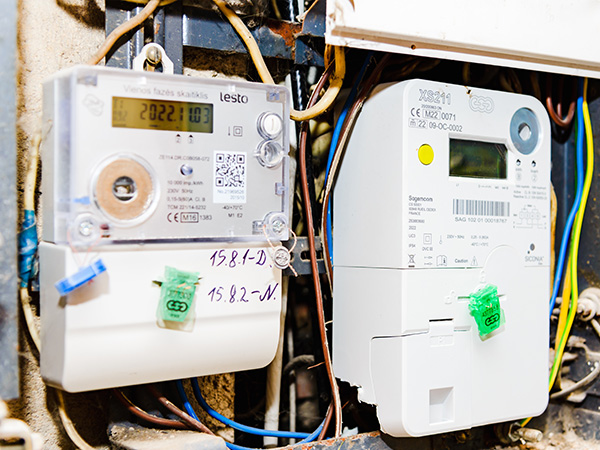
Smart meters
Smart meters empower households to take control of and optimise their energy usage, lowering bills.
Smart meters boost grid stability and lower electricity costs. They do this by providing real-time data on energy usage which allows grid operators to better match fluctuating supply with actual consumer demand, reducing the reliance on fossil backup.
They do not give energy companies the ability to arbitrarily disconnect customers. Any disconnection must follow strict regulatory procedures, just as with traditional meters 18. On the contrary, by promoting grid stability, smart meters make sure that the likelihood of a disconnection is lowered.
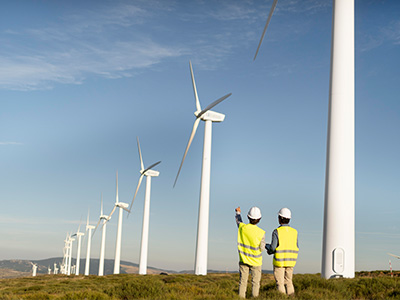
Electricity prices
Wind and solar energy are the cheapest sources of electricity in Europe.
Thanks to continued innovations, the price of wind has fallen by more than 50% since 2010 19. Wind is now among the cheapest sources of electricity in Europe 20.
And although the wind industry is currently battling with inflation and supply chain disruptions, prices will continue to fall in the long term
Rising fossil fuel prices caused Europe’s energy crisis
Solar and wind now supply around 30% of Europe’s electricity needs, up from 10% in 2013. Yet despite these capacity additions of cheap electricity, Europe has been facing an energy crisis. In past years, energy prices were extremely volatile, reaching record highs. Some actors have blamed this problem on the expansion of renewable energies.
The real reason for the crisis is Europe’s high dependence on expensive foreign fossil fuel imports. In 2021 the EU imported 45% of its gas needs from Russia 21. When Russia intentionally limited its supply to Europe in the wake of its full-scale Ukraine invasion 22, prices skyrocketed across the continent.
The growing share of renewables has offset some of the damage caused by the overreliance on fossil imports. The International Energy Agency (IEA) says 23 that EU electricity consumers saved €100bn between 2021 and 2023 thanks to electricity generation from newly installed solar PV and wind, replacing an estimated 230 TWh of expensive fossil fuel generation. And in Germany, where Europe’s biggest wind fleet is located, onshore wind alone lowered average electricity market prices by one-third in 2024 24.
While the EU has reduced its dependence on Russian fossils, it is still greatly dependent on other expensive foreign fossil imports. The EU imports more than 50% of its energy needs, most of it in the form of fossil fuels. This continues to put a great burden on energy bills.
Europe needs to electrify its energy consumption. The more renewable electricity we have in our system, the lower our energy prices will become. Rystad estimated that Europe could save €76bn per year on fossil fuel imports if 2030 wind expansion targets were met 25.
In this context, the primary energy fallacy is a common misunderstanding 26. Under this fallacy, people assume that all the primary energy input from fossil fuels needs to be replaced one-to-one by renewables, without considering the vast amounts of energy lost in the conversion of fossil fuels.
Burning fossil fuels to generate electricity or power vehicles is highly inefficient, with a significant portion of the energy being lost as waste heat. In a blog post, Oxford University’s Dr. Jan Rosenow shows that more than 2/3 of all primary energy is lost as waste heat 27.
Renewables, especially electricity, have much higher conversion efficiencies than fossil fuels. Replacing fossil fuels with renewables doesn't require an equivalent amount of primary energy. ETIP Wind found that electrifying Europe’s energy system will reduce primary energy demand from around 17,500 TWh in 2019 to only around 7,000 TWh by 2050 28.
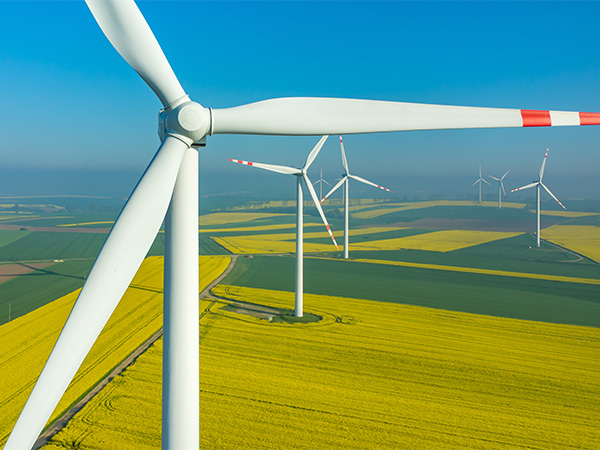
Subsidies
According to the International Energy Agency (IEA), new wind and solar projects are now the cheapest source of electricity in most parts of the world, even without subsidies 29.
The EU’s economies are spending a lot of money on energy imports, mostly on fossil fuels. For example, in 2021 they spent €300bn. And in 2022 they spent around €600bn 30 because of cost increases related to the energy crisis.
Europe is gradually adding renewable capacities to replace these fossil fuel imports with cheaper domestic energy sources. But it’s not happening fast enough. While electricity is becoming increasingly renewable, Europe’s electrification share has stagnated in the past years, while China is pulling ahead 31.
IEA data shows that China has increased its electrification rate from below 20% in 2020 to around 30% today 32. Over the same period, Europe’s electrification rate flatlined at less than 25%. This means that fossil energy dependence persists in non-electrified sectors, which make up more than 75% of the energy mix. Europe is falling behind in the global race to secure competitive, local renewable power 33. This is a dent to Europe’s industrial competitiveness and energy security
Fossil fuel subsidies are one of the reasons why we’re not decarbonising quickly enough. In 2023 fossil fuel subsidies amounted to €110bn in the EU 34. These subsidies undermine the business case for making the needed upfront investments to build more renewables.
Instead, we should be supporting renewables to boost energy security. And make sure the massive value we invest in energy stays in European economies. However, in 2023 renewable subsidies were around half of fossil subsidies in the EU, €60bn 35.
Contracts for Difference (CfDs) are the most common form of public support for wind energy today. They are a good deal for Governments: Governments and wind turbine operators agree on a strike price. Whenever the market price is lower than this agreed price, the Government pays out to the operator. Whenever the market price is higher than the agreed price, wind turbine operators pay back to the Government. During the energy crisis in 2022-2023 wind farm operators in France paid back €6.3bn to the French budget 36. UK wind farms frequently pay back because market prices exceed their strike prices. This helps reduce costs for consumers and taxpayers.
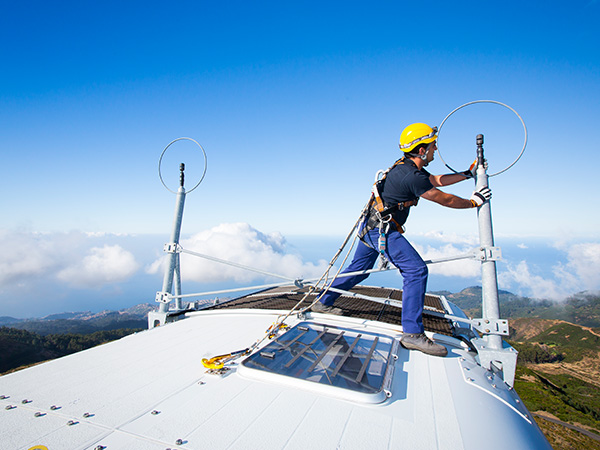
Feasibility and reliability
Wind energy is one of the cheapest sources of energy. You can build wind farms within a year.
A common objection to wind power is that it is inefficient because wind turbines only produce electricity when it is windy, not necessarily when we need the power most. This is only partially correct. Wind turbines do not need very strong winds to produce electricity. New land-based wind turbines have capacity factors of up to 35–40% and are in operation 80% of the time. For new offshore wind turbines, capacity factors are above 50%. The capacity factor is the measure of how much electricity a wind turbine actually generates compared to its maximum potential output.
Wind has a higher capacity factor than other renewable energy sources. 1 MW of wind give you twice as much electricity as 1 MW of solar. However, solar is a great addition to wind as they complement each other from a day and season perspective.
Wind farms are also complemented by clean energy storage technologies, such as batteries and pumped hydro, to ensure a consistent supply for customers, even on calm, windless days. Some turbines are specifically designed to withstand high-wind speeds and extreme weather events.
Expanding the grid infrastructure further improves the reliability of a renewables-based electricity system. Grids allow us to send electricity from renewable surplus locations to locations faced with scarcity. The more integrated renewable capacities we have spread across Europe, the more reliable our system becomes.
No power plant is 100% reliable. During a power plant outage, whether a conventional plant or a wind plant, backup is provided by the entire interconnected utility system. The utility system is also designed to accommodate load fluctuations which occur continuously.
This feature also facilitates the accommodation of wind plant output fluctuations. The indicator most often used to describe grid reliability is the average power outage duration experienced by each customer in a year, “System Average Interruption Duration Index” (SAIDI). Based on this metric, Germany, where renewables supply nearly half of the country’s electricity, boasts a grid that is one of the most reliable in Europe and the world.
In 2020, SAIDI was just 0.25 hours in Germany. Only Liechtenstein (0.08 hours), and Finland and Switzerland (0.2 hours), did better in Europe. Countries like France (0.35 hours) and Sweden (0.61 hours), both far more reliant on nuclear power, did worse, for various reasons 37.
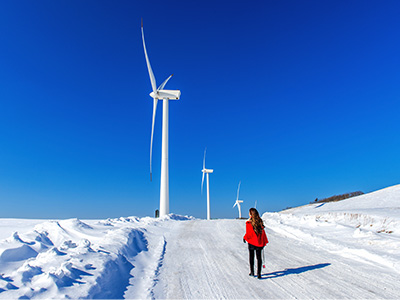
Wind turbines freezing in winter
Modern wind turbines can operate in extreme cold, including Arctic conditions. Some use heating elements and special coatings to prevent ice buildup.
Wind projects are generating electricity today in a wide variety of environments, including cold climates like Finland and the North Sea. Wind turbines can be fitted to withstand freezing temperatures down to around -30 degrees Celsius 38.
During Texas’ cold snap in 2021, which caused a power outage and led to the deaths of at least 246 people, some wind farms stopped producing electricity. Several turbines iced over or were not designed to operate in such cold temperatures, which made the equipment brittle. But that was a flaw in preparation, not in wind power itself. When extreme weather happens in places where turbines are not fitted with weatherising technologies, like waterresistant coatings or heaters to repel and melt ice, wind energy production can suffer 39.
Modern turbines are equipped with de-icing technologies managed by the control rooms of wind farms. These include heating systems inside the blades like hot air circulation, mechanical de-icing devices or fluids and blade vibration systems 40.
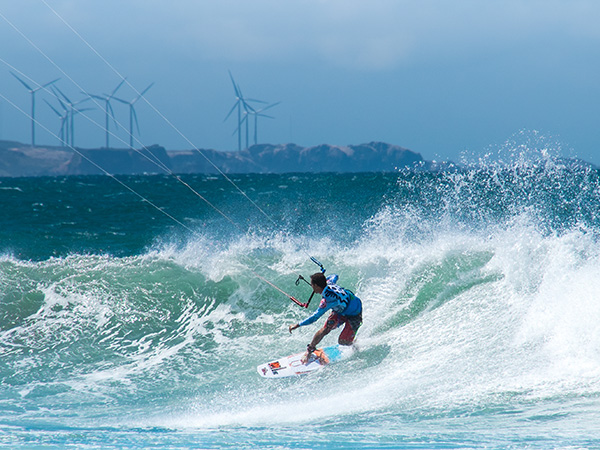
Tourism
Studies have found that wind energy has no or a limited impact on tourism 41.
This myth is especially prevalent in coastal communities which fear changes in the beach view caused by offshore turbines. But it’s also used more broadly in any context where wind turbines interfere with an (allegedly) natural or cultural landscape that should be preserved 42.
Extreme and intentionally misleading renders are often used by wind energy opponents to illustrate the alleged impact of wind turbines on the visual landscape:
Studies have found that wind energy has no or a limited impact on tourism 45.
The exception are studies that asked people before the construction of a wind farm if they will have a negative impact. This confirms that people overestimate the negative impact of wind farms 46.
Additionally, these studies partly assumed that offshore wind farms are built very close to the shore. While offshore wind farms used to be built close to the shore, the trend is that wind farm shore distance is increasing. According to WindEurope’s 2024 offshore stats report 47, current offshore wind farms are around 40km (25 miles) off the shore on average. And those under construction are more than 50km (30 miles) away.
Wind turbines have the potential to rejuvenate deprived rural areas.
Urbanisation is a consistent trend across Europe. People are leaving their countryside villages to study and work in cities. This leads to population decline, vacant housing, underinvestment in rural infrastructure, demographic issues and decay in structurally weak, rural areas.
Wind energy is one of few sectors of our economy that invests in rural areas. Onshore wind farms pay local taxes to local municipalities. Wind farm developers often make significant investments in local infrastructure like roads. They financially support local culture, schools and sports teams and set up community funds to invest in nature restoration or municipal infrastructure like churches, townhalls and swimming pools.
These investments can indirectly spur local tourism.
In Germany wind farm developer ABO Wind helped finance the Geierlay suspension bridge. The project has surpassed all expectations. It has attracted more than a million visitors to the town since 2015. It generates extra income from parking, overnight stays and restaurants 48.
In some cases, wind farms themselves attract tourists. For example, Whitelee Wind Farm in Scotland is one of the country’s most popular tourist destinations. And the Mount Lucasa Wind Farm Walk and Cycle Park in Ireland is visited by more than 500 people a week. Tours to offshore wind farms are also increasingly popular. The Saint Brieuc offshore wind farm in France has developed a green industrial tourism concept which includes coastline viewpoints and boat excursions to the wind farm 49.
Rural and sustainable tourism is trending. Across studies, especially young travellers state that sustainability influences their travel decisions 50. The Wind Power Ecotourism Guide, promoted by the Spanish Wind Energy Association AEE, includes 10 extraordinary routes through rural Spain 51.
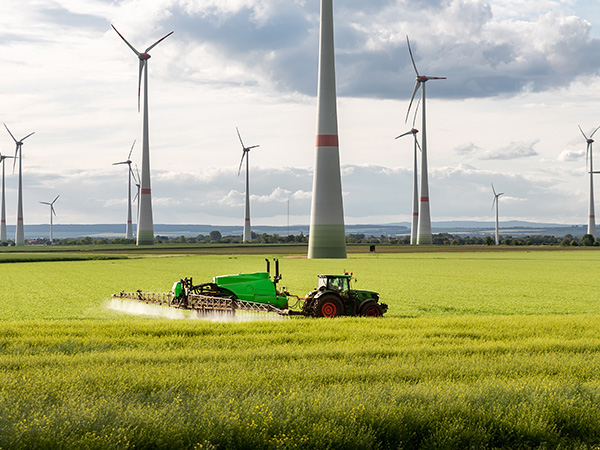
Farming
Wind farms have minimal impact on the productivity of the land beneath them.
Farming and wind energy go hand in hand. Many farmers actively embrace wind turbines on their land, seeing them as a valuable and sustainable source of income that complements traditional agriculture.
Contrary to conspiracy theories that claim wind power is being forced onto rural communities or that it harms farming, farmers themselves are speaking out to clarify that these claims are false and misleading. Decisions to host turbines are voluntary and based on long-term benefits 52.
Wind turbines occupy only a small portion of farmland, leaving the vast majority available for crops or livestock. The infrastructure is designed to minimise disruption, and access roads are often shared with existing farm paths. This means that agricultural productivity is not compromised. The additional income from leasing land for turbines can help stabilise farm operations, especially in times of economic uncertainty or climate-related challenges 53.
Learn more about the farmers embracing wind energy in this emotional "The Guardian" piece, which portrays John Davis, a Texas rancher, Trump supporter and former Republican lawmaker. He fights against his party’s plans to limit renewables, as wind energy has become the financial lifeline for his deprived rural community 54.
Or learn more in this YouTube video of a German farmer who proudly hosts a 200m turbine on his land 55.
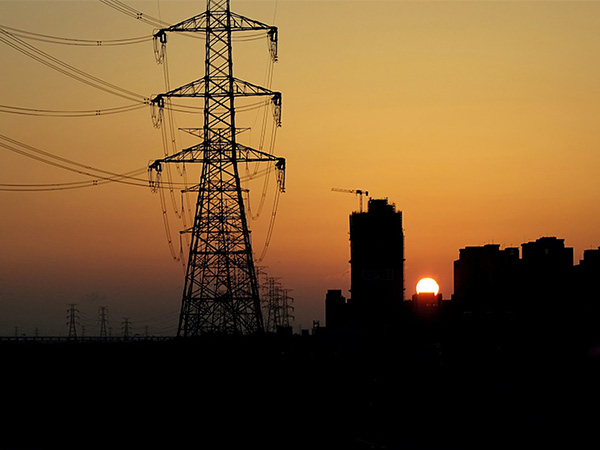
Blackouts
Wind energy does not increase the risk of blackouts.
Modern energy systems integrate large shares of variable renewables without significantly higher risks of outages. As electricity storage, digitalisation and flexibility improve these shares will only increase.
The claim that wind energy increases the risk of blackouts is as old as the technology itself. When variable renewables like wind and solar first came up, doubters warned that more than 5% of wind and solar in the system would cause chaos and ultimately lead to large-scale outages. They argued that the grid cannot deal with that much variable generation. History has taught us that this was very wrong. In Europe 20% of all electricity consumed comes from wind56. Denmark gets almost 60% of its electricity from wind57. And many European countries, including Portugal58, Spain59 and Greece60, have run hours and days solely on renewable electricity. Germany has around 30,000 wind turbines. Yet they run one of the most secure and reliable electricity grids worldwide61.
However, outages do occur. Spain experienced a large blackout on 28 April 2025. Again, commentators were quick to pin the blame on renewables. But a thorough analysis by the European Network of Transmission System Operators for Electricity (ENTSO-E) concluded that renewables were not to blame for the event. Instead, excess voltage in the Spanish grid62.
Europe wants to be climate-neutral by 2050. Several Member States already before that. Digitalisation, increased system flexibility, modernised electricity grids, new storage technologies and demand-side management will ensure that these targets can be met without an increased risk of blackouts.
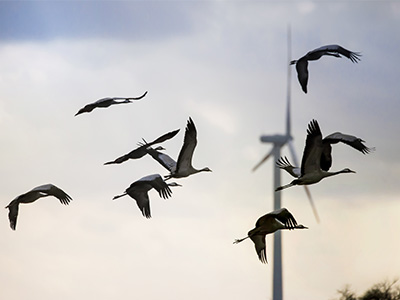
Birds and bats
The impact of wind farms on birds and bats is extremely low compared to the impact of climate change and other human activities63.
Like every other human activity, wind energy has an environmental impact. But we have to keep in mind that wind turbines ease the burden posed by climate change which remains the biggest threat to biodiversity, including many bird populations.
With an average global temperature increase of 1.5°C due to climate change, 6% of insect species, 8% of plant species and 5% of vertebrates would lose more than half of their habitat 64. Currently, we are moving towards an increase of 2°C and more.
Tackling climate change is essential to conserving our diverse bird populations, which are at risk globally 65. We are committed to protecting the natural environment (wildlife and plant life) where we develop our projects. We consider the impacts of individual wind farms and their cumulative long-term impacts and do everything we can to prevent, manage and mitigate them.
Before construction, all our projects are assessed by a rigorously independent planning and approval process. We carry out Environmental Impact Assessments (EIAs) to identify all the potential impacts of the wind farms and their supporting facilities 66.
The installation phase of a wind farm is time-limited, and we have an array of measures and techniques to minimise its impact 67. We avoid building a wind farm during bird nesting season and reduce noise pollution for marine life in offshore wind farms using technology such as air bubble curtains and hydro sound dampers. We experiment with different colours to make wind turbines and grid connections more visible to birds and avoid collisions, see examples from RWE 68 and Elia 69.
The impact of wind farms on birds is extremely low compared to other human activities. Wind turbines are responsible for a relatively small percentage of bird deaths compared to cats, traffic, buildings and agriculture, as highlighted in the graph below 70.
The impact of wind on birds is also far lower than other forms of power generation – research shows 0.3 bird fatalities per gigawatt-hour of wind compared with 5.2 bird fatalities per gigawatt-hour of fossil fuel generation 71.
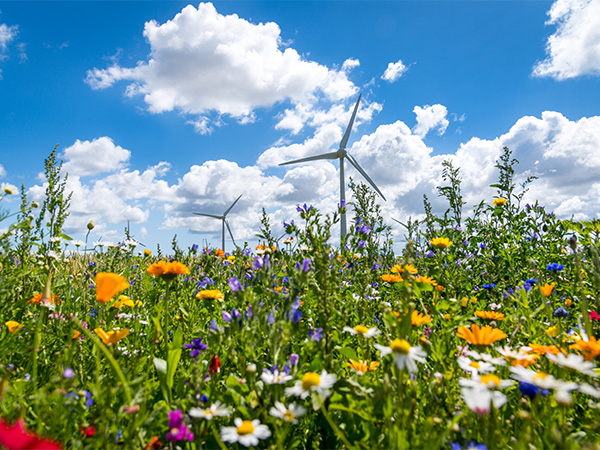
Insects
The insect population decline is driven by other factors.
Insects make up the majority of all animals. They have several important functions in stabilising our ecosystem. Their exact numbers are hard to quantify scientifically but it is clear that populations are rapidly decreasing 72. A German study raised eyebrows, claiming that German wind turbines would kill 1,200 tonnes of insects annually 73. This has been used for disinformation campaigns against wind energy, claiming wind energy is the reason for insect population decline.
Environmental experts were quick to question the validity of the findings 74. Even if the numbers were correct, the 1,200 tonnes of deceased insects would still be negligible in comparison to 400,000 tonnes of insects eaten by German birds every year 75.
The German Wind Energy Association BWE published a fact-checking document. It puts the insect fatalities caused by wind turbine blades in comparison with other human-made factors, such as climate change, intensive agricultural practices, monocultures, pesticides and insecticides, urbanisation and changes in space use. The result: wind energy is not among the main reasons for the decline of insect populations. The paper also states that insect populations have been in decline well before the commercial use of modern wind turbines 76.
Generally, most insect populations live outside the rotor height of modern wind turbines.
They fly closer to the ground (not higher than 30 meters above the ground) and often only short distances, around existing habitats, food sources, nesting habitats and other vital resources. This is especially true for bees. Wind energy projects could even have positive effects on local insect populations. Wind farm developers usually have to undertake restoration measures to compensate for their interference with nature.
Growing flower strips is a common compensation measure. On these strips, native plants can thrive, creating new biotopes for insects and other animals. Or take German wind developer WPD. They built a shallow water basin to compensate for the impact of the Mahndorf wind farm. The 2,000m2 basin provides vital habitat for insects, amphibians and bats 77.
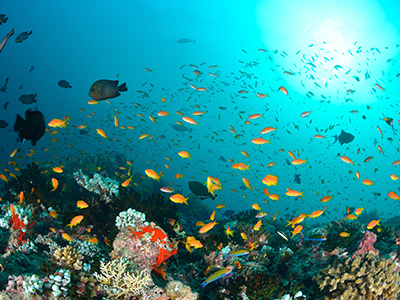
Marine biodiversity
Offshore wind farms ease the burden of climate change, the biggest threat to the ecosystems of the world’s oceans.
One of the most-shared lies around offshore wind is that wind farms are responsible for an uptick in whale deaths. There’s no credible evidence to support these claims. Whales have been dying in larger numbers for many years, but offshore wind isn’t the reason why 78.
However, offshore wind farms can have both positive and negative impacts on the environment. In the EU, offshore wind farms must undergo a site-specific Environmental Impact Assessment (EIA)79 which lays out the potential negative impacts and how to avoid, mitigate or compensate for them. The goal is to have projects delivered successfully and with limited permitting risk while ensuring a positive impact on the species population.
Furthermore, the wind industry takes an active part in researching the environmental impacts of its wind farms together with local authorities and scientists and often makes results publicly available.
Examples include research on birds 80, dolphins 81 and harbour porpoise 82. This experience allows the industry to develop advanced models for assessing population effects 83 of any disturbances to biodiversity.
During construction offshore wind farm developers can use different technologies, e.g., bubble curtains, to limit sound emissions generated from piling, helping to mitigate disturbances to marine life 84. Any disruption during construction is temporary. And the fish often return to wind farms in greater numbers as the wind farms act as an artificial reef. This has been demonstrated through long-term monitoring programmes, for example, in Denmark 85 and in Belgium 86.
Wind project developers also take extra measures, where needed, to protect biodiversity during wind farm operation. They use technology to detect and deter birds and bats; and in some cases, stop the turbines from spinning at certain times to prevent collisions. During this phase, environmental impacts must be carefully monitored, as per by the EIA Directive 87. This allows operators to manage potential negative impacts and ensure compliance with environmental permits.
Positive effects on biodiversity
Once built, each wind turbine can support up to 4 metric tons of shellfish that attract other marine wildlife 88. This leads to a healthy marine ecosystem that may not have been as abundant or productive before construction. As a result, larger sea mammals, including seals and harbour porpoises, can thrive in offshore wind farms 89. A Dutch study found more porpoise activity in the operational wind farm area than in reference areas outside the wind farm, which is most likely linked to increased food availability, the exclusion of fisheries, and reduced vessel traffic 90.
There are several measures today that can enhance these positive impacts and help seabed and local ecosystems recover even more quickly. For example, the sector is involved in ecodesigning offshore wind infrastructure, such as energy islands and cables, that support benthic and reef ecosystems 91. These Nature Inclusive Designs (NID) act as a catalyst for biodiversity.
Positive impact can go beyond upgrading the design of wind-related infrastructure. Offshore wind developers and their partners are also considering how to add protection around the infrastructure to sustainably manage and restore nature-so-called Nature-Based Solutions (NbS). For example, they deploy oyster reef cultures between wind turbines as they actively improve seabed conditions, increase water quality through filtration and boost local ecosystem services, including food production 92. These solutions are being tested in the Dutch North Sea, where flat oysters were once abundant but are very scarce today due to overfishing. The Rich North Sea 93 has several oyster-related projects ongoing, including at the Eneco Luchterduinen, Gemini, and Blauwwind offshore wind farms.
Other applications include blue mussels and seaweed cultures. The latter is particularly promising, including for removing CO2 from the atmosphere. The first commercial project, a collaboration of Amazon Right Now Climate Fund and North Sea Farmers in the Netherlands, invested €1.5m to construct a 10-hectare seaweed farm, which is expected to produce at least 6,000 kg of fresh seaweed in its first year (2024) 94.
There are also promising solutions for more complex species. The Rich North Sea is testing fish hotels 95 attached to the Hollandse Kust Noord high voltage station. These allow small fish to enter, keeping predatory fish out, thus providing shelter and a safe foraging area for small fish. And Ørsted has built artificial nesting structures for kittiwake, a vulnerable bird species, off the coast of Lowestoft, UK. Each structure will have approximately 500 nesting spaces to introduce new chicks into the population 96.
You can explore various offshore wind nature enhancement and restoration projects across Europe via Ocean’s Energy and Nature Database 97.
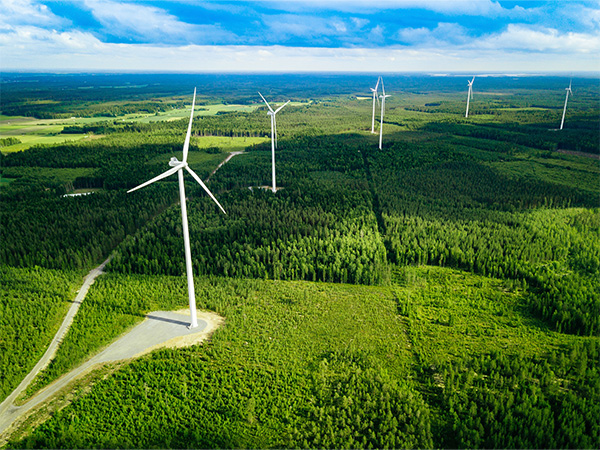
Deforestation and turbines in forests
Wind turbines often require very small clearings. They are sometimes placed in areas that were already deforested (due to drought).
Depending on the geographical conditions of a country or region, wind turbines are built in forest areas. This is, for example, often the case in Scandinavia but also parts of Germany and Central Eastern Europe. In most cases, these wind turbines are not built in “natural forests” but on “monocultural forestry land”, an important difference.
Protected forest areas with especially high ecological value for humans and animals, or forest areas with particularly valuable deciduous and mixed woodlands, are always excluded from wind energy use. Wind turbines are mostly installed in monoculture forestry areas which typically have lower biodiversity.
Especially green-minded citizen initiatives are often protesting if trees have to be cut down for wind energy projects, sample image here. Right-wing boulevard and environmental press often jump on that train with glossy headlines98,99, claiming that “whole forests need to be cut down for wind energy” and alleging “green schizophrenia”.
The reality is far less frightening. Yes, installing wind turbines in forests does require some space, but only small-scale clearings. The overall land use can be minimised through compact construction methods and favourable site conditions - such as low terrain slopes. Suitable locations are often existing clearings caused by storm damage, or areas already affected by infrastructure, like highways or transmission towers. Areas already deforested due to climate-change-induced droughts and pest infestations can be used directly for this purpose too.
Wind turbines in forestry areas require less deforestation than most people would imagine. Older turbine models require 0.5 hectares of open space, less than a football pitch. Much of this area is later put back into natural condition, leaving only a minimal impact, as neatly illustrated here. In Germany, around 2,100 wind turbines were built in forests by 2020, with a total area of approx. 966 hectares (2,100 x 0.46). According to the Federal Forest Inventory, around one-third of Germany's 11.4 million hectares are forested, meaning less than 0.01 per cent of the forest was cleared for wind energy100. Modern turbines require 2-4 hectares. Even under these conditions, the amount of forest cleared for wind energy remains minimal in relation to the overall forest.
The number of trees cut down varies from project to project. According to Gudula Lermer, Chairwoman of the German Forestry Association, the number of trees that have to be felled for a wind turbine is not a major issue. She speaks of a ‘very small impact on the forest’ 101.
As with open land, the planning and construction of wind energy projects in forests are subject to strict regulations to ensure ecological concerns are carefully considered throughout the approval process. Forestry authorities are involved early in the planning stages. When a site is approved, compensation measures are mandated. These typically include reforestation or enhancing the ecological quality of existing forest areas to offset any environmental impact 102.
Wind energy should be viewed as an opportunity to protect forests from environmental damage. By reducing greenhouse gas emissions, turbines help mitigate the rising impact of climate change on forests. A study found over half of Europe's forests are currently vulnerable to climate-related hazards such as wildfires, insect outbreaks, windthrows and droughts103.
And wind energy can be a crucial source of income for forest authorities to make investments in climate resilience - for example, funding reforestation, improving firebreaks, or introducing more drought-resistant tree species. German forestry groups, like the Waldbesitzerverband Niedersachsen, stress that expanding wind power in forests is key to enabling these efforts 104.
Another common misperception in this context: forests absorb more CO2 than a wind turbine can save. Therefore, wind farms should not be built on forestry land. This is not true, as Correctiv has already checked105.
According to Germany’s Federal Environment Agency, the amount of CO2 saved by wind turbines is more than 1,000 times higher than the amount of CO2 lost due to the clearing of forests required for this 106.
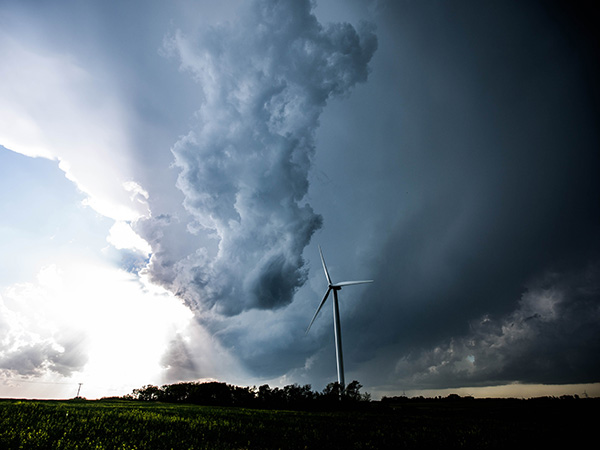
Weather patterns
The atmosphere is a highly dynamic system influenced by countless natural processes.
When it comes to the impact of wind farms, the focus should be on the atmospheric boundary layer, the part of the atmosphere closest to the ground, where we live and where wind turbines operate.
Within this layer, turbines can create small, localised changes in wind speed and turbulence, but these effects are limited in scale and intensity.
Offshore wind farms may slightly influence evaporation and cloud formation near the surface, but these changes do not disrupt weather patterns.
Wind turbines extract energy from the wind, causing a decrease in wind speed behind the rotor. Like any large object exposed to wind (planes, bridges, skyscrapers, etc.), turbines create wakes that mix the air and slightly reduce wind speeds in the direction the wind is blowing. These effects are temporary and fade with distance from the turbines. While they may cause minor variations in airflow or temperature near the turbines, they don’t lead to significant or lasting changes in the weather.
Some of this air mixing can redistribute heat close to the surface, which may cause small, short-term changes in temperature. However, these shifts are insignificant compared to the natural movements of heat and energy in the ocean and atmosphere. Importantly, turbines do not generate or add heat to the system, unlike fossil fuel emissions, which are the real contributors to climate change.
Studying these interactions is complex and requires advanced modelling to account for all the variables involved. Some research exists, but it often carries significant uncertainty and is sometimes misrepresented by opponents of wind energy. More detailed studies, especially those using high-resolution climate models, will help improve our understanding of how offshore wind farms interact with the ocean and atmosphere over time. In the end, while wind farms may have very minor, localised effects on the air around them, they do not disrupt the broader weather system. What they do offer is a crucial solution to reducing greenhouse gas emissions, the real threat to long-term climate stability.
Related to this, disinformation pieces have claimed that wind turbines negatively affect microclimates in their area of installation and climate change. Find debunking articles in the footnotes 107.
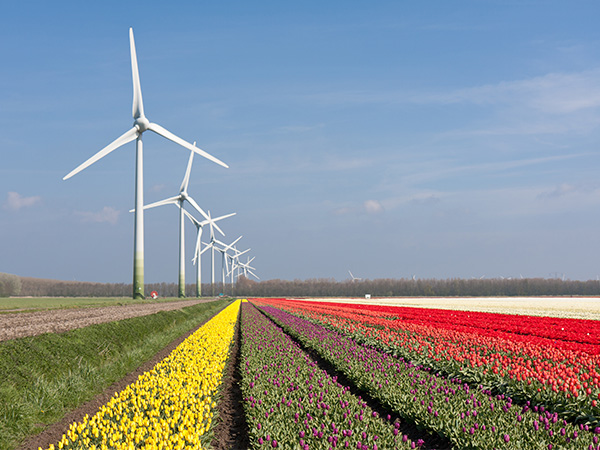
Emissions
Critics of wind energy frequently come forward with all sorts of misinformed claims around wind turbine emissions. From wind turbines generating more CO2 emissions during construction and installation than they can save over their lifetime, to turbines having builtin diesel generators because they wouldn’t spin otherwise. Much of this is simply nonsense.
Wind energy is among the most sustainable and environmentally friendly forms of electricity generation. A German State Agency found that for each kWh produced, wind turbines produce the least greenhouse gases of all technologies 108. PV causes about 3 times more greenhouse gases per kWh, fossil fuels generate up to 100 times higher quantities. Modern wind turbines avoid around 5,000 tonnes of CO2 a year 109.
The CO2 emitted in producing, installing, operating and disposing of a modern onshore wind turbine is regained within less than a year of operation. After that, the wind turbine only avoids emissions 110. Other sources indicate even faster energetic amortisation rates 111.
You can also compare the external costs. Externalities include all positiveor negative impacts associated with energy production and consumption. These costs or benefits do not directly appear on energy bills, but are borne indirectly by society as a whole. They are related to areas such as pollution, land use and climate change. They cover the entire lifecycle and include manufacturing, installation and decommissioning. Out of all technologies, wind energy has the lowest external cost. The average external cost of wind generated electricity in 2018 was below 3€/MWh.
This is 12 to 60 times lower than solid fossil fuels and five times lower than Solar PV. Offshore wind had a slightly higher footprint than onshore wind. The difference can be explained by offshore wind’s reliance on the maritime supply chain. As the maritime sector decarbonises, the onshore-offshore disparity will diminish. Graph from this 112 report:
A lot of attention focuses on the CO2 emissions of different electricity generation technologies. But there are other – perhaps equally harmful – emissions which should be taken into account when evaluating their environmental impact. Operating wind turbines do not emit other greenhouse gases like methane or any other air pollutant such as nitrogen oxide (NOx), sulphur oxide (SOx) or particulate matter (PM).
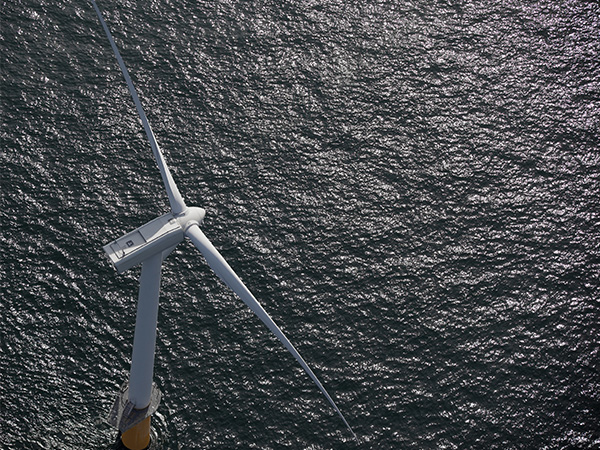
Microplastics
Wind turbines emit minimal BPA and microplastics, as well as low emissions during their entire lifecycle.
Wind turbines contribute very minimally to other forms of emissions, such as microplastics and bisphenol A (BPA). For instance, the estimated annual BPA emission per wind turbine is a mere 0.2g 113.
Compared to fossil fuel-based electricity generation, wind energy significantly reduces the emission of numerous pollutants. Fossil fuel power plants release large quantities of sulfur dioxide (SO2), nitrogen oxides (NOx) and particulate matter into the atmosphere which contribute to respiratory problems and other health issues 114.
The microplastic emissions by wind turbines are negligible compared to those by tires, paints or textiles. Almost every human activity nowadays produces microplastics to some degree, in either a direct or indirect way. For example, a Dutch study 115, estimated that wind turbines contribute to only 0.0005% of microplastic pollution in the Netherlands.
What about PFAs?
The EU is currently discussing restrictions on PFAS. They are used in textiles, building materials, food contact products and packaging, medicine and many other sectors of the economy. They are also used in insulation materials and seals in switchgear, and in the nozzles of circuit breakers – equipment we need to build grids. The use of PFAS in these cases is critical. Alternatives do exist, but have limited availability. Technology continues to develop. To deliver the energy transition, Europe needs to accelerate the build-out of transmission and distribution grids and ensure that existing grids can be repaired and maintained.
And wind turbines?
The wind industry is already using PFAS-free coatings for the rotor blades. And it continuously assesses whether other components and materials may contain PFAS and, if so, whether PFAS-free alternatives are available. The wind industry acknowledges that in certain use cases, downstream industries may need time to develop performant substitute materials. PFAS are a problem. However, wind energy is largely working with PFAs-free materials.
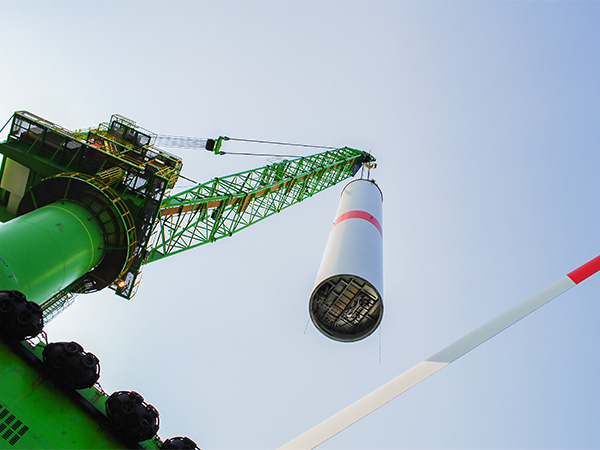
Decommissioning and recycling of wind turbines
90% of a wind turbine is recyclable. The remaining parts are disposed of under high environmental standards.
Wind turbines are built to last. While their standard design lifetime is 20-25 years, many operate for much longer. Some even reach 35 years or more 116. The industry is now designing turbines for even longer lifespans, with the first 40-year design certification already granted 117.
Some voices in Poland have misused the decommissioning of Germany’s first offshore wind farm, Alpha Ventus, to falsely claim that offshore wind is unreliable and short-lived. In reality, Alpha Ventus was a pioneering test site that successfully operated for 15 years, fulfilling its purpose of gathering data and advancing the industry. Its planned dismantling is not a failure but a valuable next step, offering the sector a chance to learn from one of the first full-cycle offshore projects and set best practices for future decommissioning.
At the end of their operational life, wind turbines are typically repowered, meaning old turbines are replaced with new, more powerful models that significantly increase energy output. Where repowering is not an option, wind farms are safely decommissioned. And the land is restored to its original condition.
Up to 90% of a wind turbine’s mass is already recyclable using well-established waste management practices. Components such as the tower, foundation and nacelle are treated with conventional recycling methods. Wind turbine blades are made of special materials that provide strength and durability. This makes them harder to recycle. However, the industry is addressing this challenge with a range of solutions:
- Reuse: Blades enter a thriving second-hand market.
- Repurposing 118: Blades are being transformed into pedestrian bridges, urban furniture, playgrounds and even small buildings.
- Recycling 119
& Recovery: Several technologies are
being scaled up, including:
- Cement Co-Processing: The glass fibres in a blade are recycled and integrated as a raw material in cement production, while the remaining resin is used as an energy source in the process. This method reduces cement production CO2 emissions by up to 1 tonne per tonne of waste 120.
- Mechanical Grinding: Converts blades into fibres and powders for reuse in other industries.
- Pyrolysis & Solvolysis: Chemical and thermal processes that break down composites to recover fibres and resins for new applications.
For new wind farms, Siemens Gamesa has already developed fully recyclable blades 121.
Although fossil fuels are used to produce their materials, and oil is used to lubricate the moving parts, wind turbines have some of the lowest lifetime greenhouse gas emissions among power generation technologies. The ‘carbon payback’ period for wind turbines is approximately 5–12 months. This is how long it takes for a turbine to offset the amount of carbon used in its lifetime (including manufacture).
Explore Our Insights
Our report produced in collaboration with Rystad Energy highlights the potential benefits of meeting Europe’s wind energy targets — from boosting GDP and job creation to reducing fossil fuel imports and cutting CO2 emissions.
More reports and insights will be added soon, so stay tuned.
